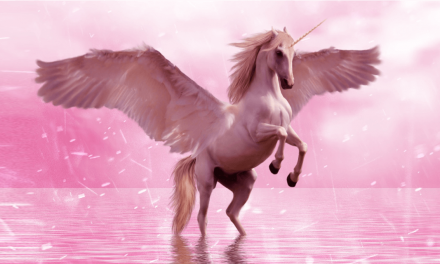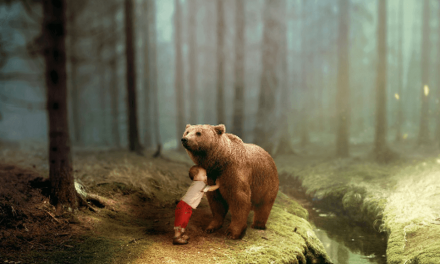In Part 3 of this series, we presented :
Theme and Content: A (Brief) Catalog of Fantasy Symbols
– – –
Fantasy game art is much like anything else in the fantasy genre. Take books and films, for example. Have you ever read a fantasy novel where a single scarab destroyed a man? Or seen a film where one little bird, minding its own business, scared the daylights out of a poor defenseless female? Probably not.
Writers the world over have come to rely on exaggeration – especially in the closely related fantasy and horror genres. Why have one lowly gremlin when you can fill the cupboard with them? Or even the whole room. Right?
And this same reasoning is used to multiply the armies of kobolds, vampires, werewolves, aliens from Mars, or whatever else may be presented in horror flicks. And, more to the point, returning to the fantasy genre, to also overpopulate the realms of smurf-dom (are smurfs fantasy creatures?), to produce endless colors of little ponies – with unreal lengths of hair (ditto), and to have dreamed up (when thinking of size and not quantity) such characters as Rapunzel (with very long hair), Cinderella’s coachmen (made from tiny lizards), the Borrowers, the Lilliputians, giants and ogres … and lions, and tigers, and bears. Oh! my!
So then, Just how much is too much when it comes to this type of exaggeration?
Well, perhaps the better question to ask is: Why exaggerate in the first place? And for the answer to that question, well, find yourself a comedian. Any comedian at all. And he or she will tell you that a man that falls in the mud is pitiable but that a man that does so continually – and pulls his friends in with him – is hilarious.
You see, we as a people are rather dense. We don’t know whether a scene in a book or in a film is meant to be funny or not – or sad or tragic or hopeful – without some reinforcing evidence. A double take. Someone repeating what someone else just said. Or the same person repeating their actions over and over again. Sometimes it’s as soft and subtle as a violin in the background, and sometimes it’s as bold and cliché as a pie in the face. But either way, the reinforcement is there. The exaggeration we’ve been talking about.
Now, going directly to the heart of our thesis: In fantasy game art, When is it best to alter reality? And when is it best to leave it alone?
If amplification or minimization (or distortion of any kind) of some detail in your fantasy art, whatever that detail may be, causes you to enter the world of fantasy, or makes you afraid (if that’s your intent), or makes you feel like a child (ditto), or calls to mind any given mindset, or causes you to believe that you could live right there alongside your fantastic beast or your brave chieftain or your strong and fearless princess – Go for it! And exaggerate all you like.
But, once you’ve begun, if your drawing or painting or computer graphic starts to look muddy or feel muddy, if the fun is gone and the dream is over, just Control Z a few times, or hit undo, or back up a few pages in your sketch book, or look back at an earlier snapshot you took of your work in progress, or … you get the idea. Push the big red reset button on the side of your easel and find the point at which you were still having fun and believing the dream and then, just try to retrace your steps from there. Where did you go wrong? Should you have used a little less red? A little more light? A few less banshees? Whatever it takes, try to uncover your problem – find the point at which you crossed what we will here call the exaggeration threshold or fantasy threshold – and try again from there. On the second go round you’ll usually know when to alter reality and when it’s best to leave it alone.
You’re the artist, and a fantastic one. You have infinite imagination, a complete tool set, and a trained eye. Your latest fantasy art piece stands right before you. Rely on your training. Have fun. And trust your gut. This one’s gonna be a masterpiece. 🙂
– – –
In Part 5 of this series we will present :
The Importance of Being Blue: Contrast and the Human Eye
Did you know that certain colors of light are more important to our perception of the world in general and of fantasy art in specific? You may just be surprised.




